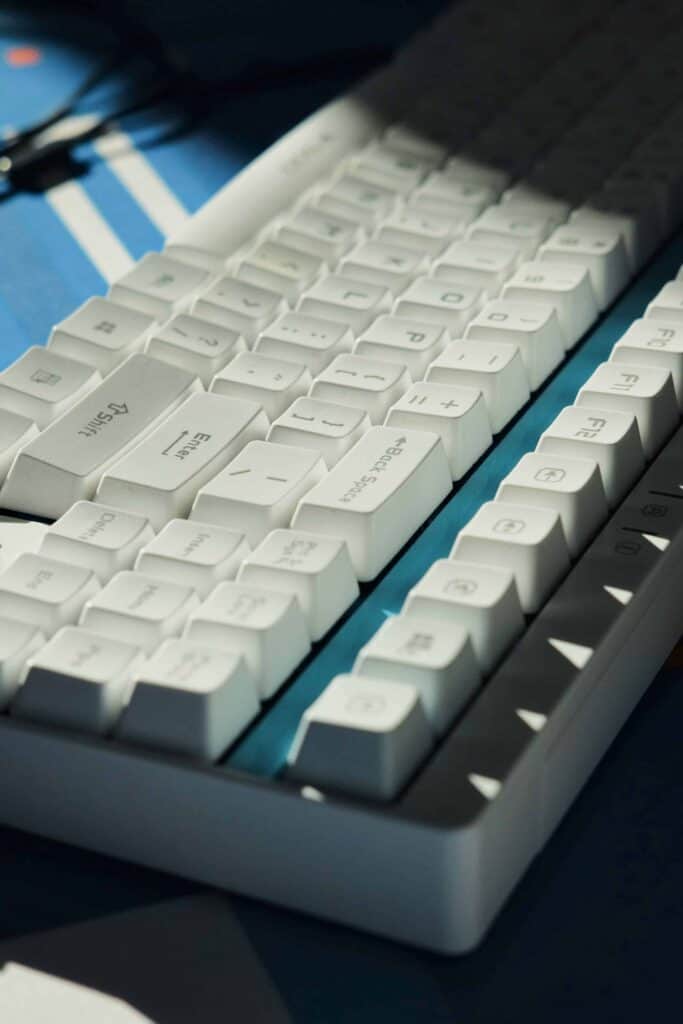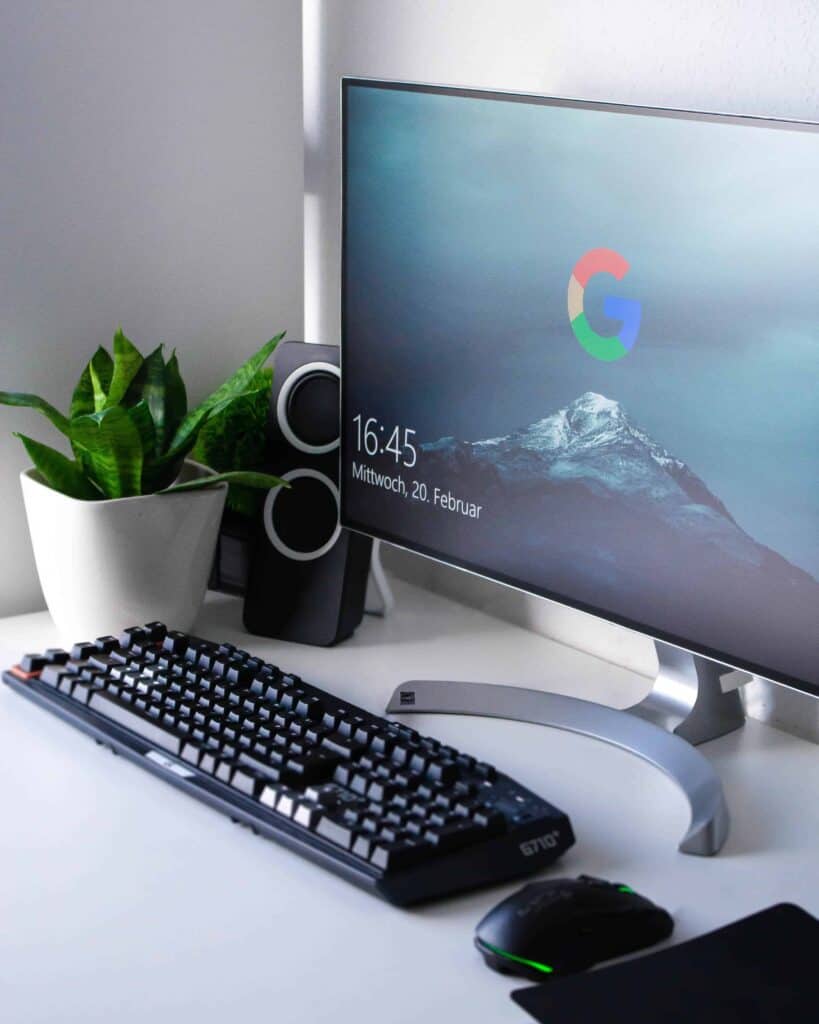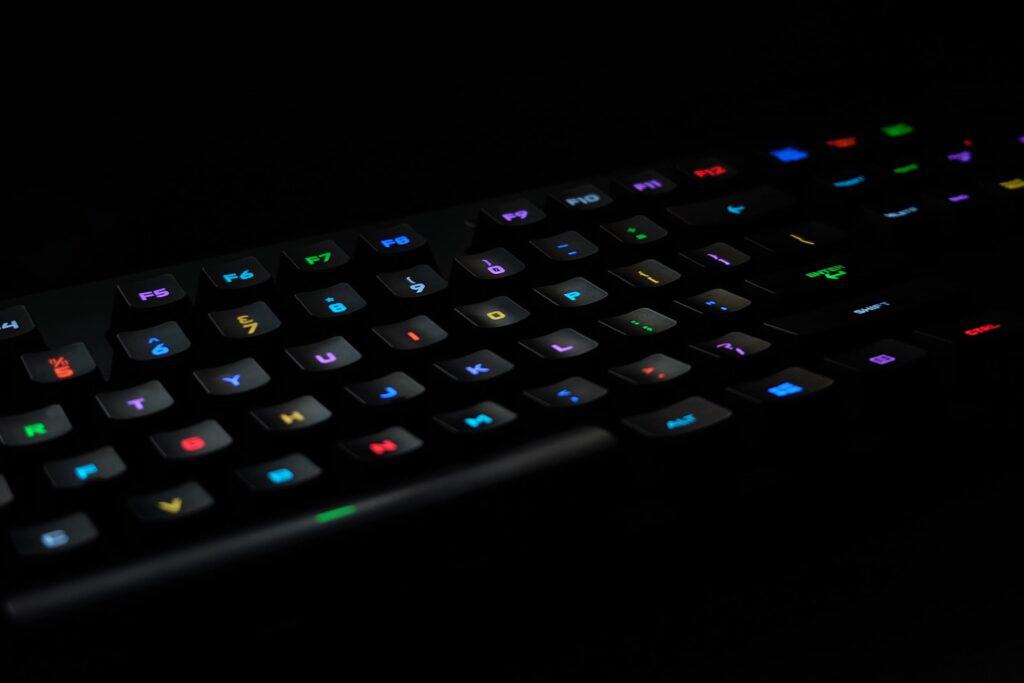Welcome, everybody!
Today we are going to talk about picking out the perfect mechanical keyboard for the office. Before we jump into the list of keyboards, we’ve created a quick guide to help you choose the best mechanical keyboard.
If you feel like you already have a good understanding of mechanical keyboards, feel free to skip this section and jump straight into the list. Otherwise, keep on reading.
Guide to picking out a mechanical keyboard for the office:
Let’s say you have a mechanical keyboard and you enjoy using your keyboard at home, then an amazing idea strikes you, what if I bring my keyboard to work? I mean, you spend eight hours typing at work, why shouldn’t you have the luxury to type on your very own mechanical keyboard in the office?
As you’re typing away on your loud Cherry MX Blue switches, you remember how much they drive your family crazy. The nonstop click-clacks being created from your fingers striking the keyboard are like Beethoven’s 5th to your ears and senses, but to your family, they would rather be subjected to medieval torture. There’s no way you can get away with your loud keyboard at work.
The bright, colorful lighting on your keyboard is without a doubt one of the most beautiful things you’ve ever seen, but to your family and coworkers it’s just distracting. You decide you don’t want to be the person at the office who looks like they are going to fly away on a UFO. You decide you need a change.
Since you’re a considerate person, you decide to get a second mechanical keyboard for the office. Perhaps a keyboard with minimal lighting and one that doesn’t create 100 decibels of sound every time a key is pressed. Something that is more workplace-appropriate, but still eye-catching enough to get a few compliments. Lucky for you, there are mechanical keyboards made just for the workplace.
Why use a Mechanical Keyboard at work?

Well, besides the fact that mechanical keyboards are objectively more aesthetic, mechanical keyboards offer customization unlike any other keyboard type. If you’re going to be spending 8+ hours everyday typing on a keyboard, shouldn’t it be designed by you, for you? Everything from the way it looks, to the how the keys feel, can be changed to get an ideal feel and look.
Customizing keyboard switches can allow for more tactile feedback, allowing for more accurate typing and satisfaction when working. There’s just something about pressing a button that gives a small bump as feedback that is intensely satisfying. The standard keyboard you use at work is most likely membrane or chiclet style, which tend to feel mushy and unstable to type on.
Many people tend to see an increase in typing speed or a boost in productivity when moving to a mechanical keyboard. Some just enjoy the experience of typing on a mechanical more, whether there is a performance increase or not. Using a mechanical keyboard is basically superior in every way.
To top it off, the durability and quality of mechanical keyboards is unmatched. Mechanical keyboards are rated to last anywhere between 50-100 million keystrokes. It’s not uncommon for your mechanical keyboard to outlive you. They can easily withstand a decade of abuse or more. Many of the original mechanical keyboards, such as the IBM Model M are still around to this day, even though they were made in the mid 80’s.
Downsides to a mechanical keyboard?

The main downside to mechanical keyboards is that they tend to cost more. The better build quality and lifespan typically make up for the extra cost, but for some, that can be a difficult hump to climb. Luckily, there are a lot of great mechanical keyboards priced in an affordable range, but they will never get quite get as cheap as a non-mechanical keyboard.
The reason mechanical keyboards are more expensive, is because every key gets its own switch underneath, instead of a membrane pad. Mechanical keyboards require a lot more components and tend to take more time and resources to build the parts and assemble them.
Mechanical keyboards also tend to be louder, but it’s possible to get a keyboard that is as-silent or more-silent than whatever keyboard you are currently using. We’ll go deeper into these types of keyboards later, but for now just keep your mind open to the possibility that mechanical keyboards can be very silent and stealthy.
Won’t the colored lights distract everyone?

While you may imagine most mechanical keyboards having colored lighting, its totally possible to get a keyboard with only white backlighting, or even without any lighting at all! It’s a common misconception to assume mechanical keyboards come with lots of different bright lights. If you do enjoy the lights, there are plenty of options available with RGB (red-green-blue) LEDs. But for an office space, were looking for a keyboard with some lights that are more tame, to avoid distracting your coworkers and yourself.
The list will include only include keyboards with white lighting. If you do want a keyboard with RGB lighting, keep in mind its possible to change the settings to turn off the lights, or change them to a less distracting color, such as white.
Aren’t mechanical keyboards loud?
When you think of a mechanical keyboard, I imagine you’re thinking of a loud, clicky keyboard that someone is typing on in the corner of the office, driving everybody else insane. This is a misrepresentation of what exactly a mechanical keyboard is.
While there are several loud mechanical keyboards, there are several types that are incredibly silent and stealthy. Generally, the sound produced by a mechanical keyboard is due to the keyboard switch type. Luckily for us, there are hundreds and hundreds of switch types, all with different sound output and tactile feedback. To simply things a bit, there are three main types of switches:
1) Tactile & Clicky
Tactile and clicky switches are probably what you imagine when you think of mechanical keyboards. These can be incredibly fun and satisfying to type on, you just need to make sure there is nobody else in a 100-mile radius of yourself, because these suckers are LOUD.
Because of the noise, we would not recommend using these in the office, or any other public place for that matter. Restrict these to home-use only. Some examples of these louder type switches include the Cherry MX Blues and Razer Greens.
Generally, if any other companies offer a blue switch, they tend to be loud and clicky, so avoid these unless you want the noise. These switches come standard in a lot of keyboards, but you’re often given the option to swap these out for more quiet switches.
2) Tactile & Silent
If you enjoy the small bump as feedback whenever a key is pressed but cannot stand the loud noise, these are the perfect option for you. These offer excellent feedback when typing and they make virtually no noise at all. These are silent and a great choice for a switch that you would want to use in the workplace. Some common switches that have the tactile and silent qualities include the Cherry MX Browns and Gateron Browns. Typically, if the switches are brown that means they are silent and tactile. These are an excellent option for someone who wants to type in a public space and not make too much noise.
3) Linear
Linears are an interesting switch type as well. Linear switches offer no tactile feedback and in general make very little noise. These types of switches can be difficult to get used to typing on because the lack of feedback can make it tough to know when to stop pressing the key. People tend to bottom-out on these types of switches until they learn the proper actuation point.
Linear switches are also commonly used by gamers, because they have some of the fastest actuation of any switch type, since they do not rely on the friction created during tactile bump that is experienced with other switch types.
If you are not a gamer, these switches can still be a great option, just keep in mind they may take a small adjustment period to get used to typing on. Since these are generally silent switches, they can be a great option for an office keyboard and won’t distract the people around you.
If you’ve ordered a mechanical keyboard, but you’re still concerned the keyboard might be too loud, there are several modifications you can make to lower the noise and dampen the sound output.
What sized keyboard should I use for work?
There are a wide variety of different sized keyboards available. Some of the different sizes include full-sized, tenkeyless, 65%, 60%, and 40% keyboards. To decide what size keyboard is best for you, you need to look at how much space you have available to work with and which keys you actually use on your keyboard.
A full-sized keyboard, for example, has all the keys you could ever need, including the arrow keys, number pad, and the F1-12 keys. This style of keyboard is great if you have a data entry job, because the number pad makes entering numbers into your computer fast, easy, and ergonomic. Most people, however, rarely use the number pad, so this may be a waste of precious desk space.
Another great option is tenkeyless, this keyboard layout has everything but the number pad. If you don’t use the number pad often, this would be great fit for you. It allows you to have more desk space, and if you’re right handed, it means that you don’t need to reach as far for the mouse.
It’s possible to go even smaller with your keyboard, down to sizes such as 65%, 60%, and 40%. The smaller you get, the less keys there are on the keyboard. At 60%, you no longer have arrow keys, and at 40% you basically only have alphabet left. To type in numbers, usually you need to press two keys as once. These smaller keyboard sizes are not for everybody, but many people do enjoy this simple layout for typing.
A quick word on split keyboards.
If you tend to get wrist or finger pain when typing, I would highly recommend looking into a split keyboard as an option. They are more ergonomic, and it puts your body in a more friendly position for typing over long periods of time.
We have a short guide about ergonomic keyboards and typing here. Although ergonomic keyboards tend to be more expensive, the amount of strain and pain they can relieve is definitely worth the price. Our main keyboard list won’t include any of these types of keyboards, but we have another post that will help you pick one out, if you are interested.
Our Favorite Pick: WASD CODE V3 Mechanical Keyboard

The CODE V3 by WASD is an excellent keyboard that comes in a tenkeyless or full-sized layout. Coming in at $155-160, the CODE V3 is very clean and is “void of any gamer over-the-top fonts and colors” and is made specifically for those who need a professional, serious looking keyboard.
We recommend ordering the keyboard with Cherry MX Brown switches, because they will be the quietest switch option, but will still give you tactile feedback when typing. If you’re willing to spend a little extra, you can order the keyboard with additional O-rings which will help dampen the sound even more.
The CODE V3 has a clean white LED backlighting, so you will be able to clearly see your keys in an office with dim lighting, without worrying about starting a light show. The keyboard also allows for easy cable routing and management, which should help you avoid having a cluttered workstation full of tangled wires.
If you do a lot of repetitive tasks, the CODE V3 allows several of the keys to be reprogrammed with macros to help you boost your efficiency and cut out non value-added activities. There are four reprogrammable layers in total.
It’s hard to find a mechanical keyboard that is better suited for an office environment than the CODE V3, it’s professional, sleek, and has all the benefits of a mechanical keyboard.
Second favorite: Ducky One Grey
The Ducky One Grey is a professional-looking mechanical keyboard geared towards those with who work in an office environment. With a case colored in different complimenting shades of the grey and white keycaps, the keyboard looks attractive and sleek.
Made for comfort and efficiency, the One Golden-grey comes with several three different keyboard stand adjustments to allow you to pick the ideal height. For a price of $109, the Ducky One Grey is relatively affordable option.
The keycaps are made from double-shot PBT, which is an extremely durable type of plastic that does not wear down overtime. Most keycaps are typically made of ABS plastic, which over time tends to wear down and develop a greasy shine. The PBT keycaps also have a more textured feel and aren’t quite as slippery as ABS.
We recommend ordering this keyboard with Cherry MX Brown switches for the ultimate quiet and tactile experience.
Runner Up: Kinesis Freestyle Pro
The Kinesis Freestyle Pro may seem like a strange pick, it’s a split keyboard design for maximum ergonomics and comfort. It may take a small adjustment period to get used to this style of keyboard, but it can be a great fit for those who experience wrist or finger pain when typing. This keyboard keeps your body in a more favorable position when typing.
The split keyboard is, well, split into two halves. It allows you to angle your arms outwards in a V shape, instead of inwards. It also lets you keep your wrists straight, with your arms angled upward slightly.
Coming in at $179, the Freestyle Pro comes with several adjustable settings, including retractable legs and optional wrist support. It’s also very easy to switch between several keyboard layouts such as Colemak and Dvorak.
Made for those who care about their bodies and the longevity of their typing career, the Freestyle Pro is an excellent option.
Wrapping up
We went over a short guide of what makes a good office mechanical keyboard, including picking out the proper size, switch type, and what qualities to look for in the keyboard itself. Our top three include the WASD CODE V3, Ducky One Grey, and the Kinesis Freestyle Pro.
I hope you enjoyed our list of favorite keyboards for the office! If you have any questions or anything you would like to add, please comment below.
And, as always, happy typing!
